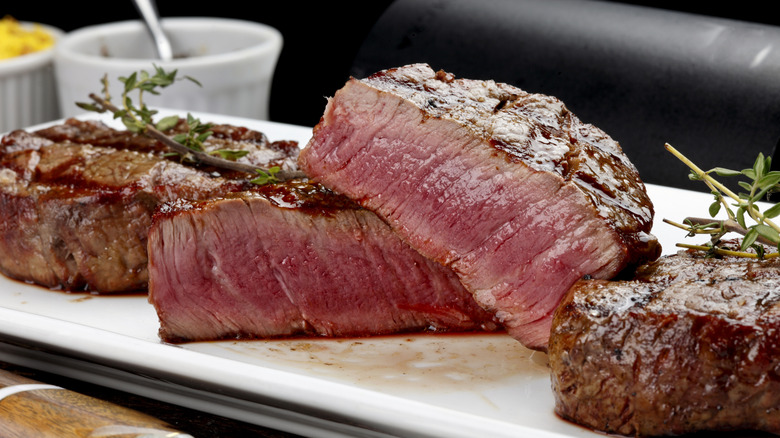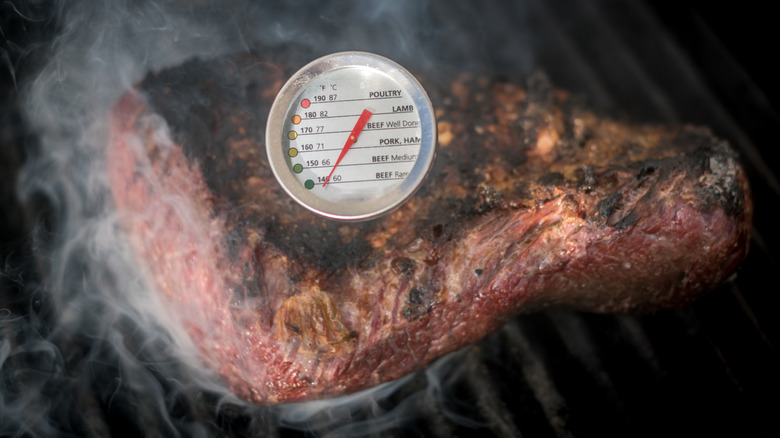Blue Steak Isn't That Color When You Eat It, So How'd It Get Its Name?
Blue steak sounds like a close cousin to the mysterious green eggs and ham, or perhaps a Halloween recipe you'd prepare to give party guests a fright. It's actually not blue, however, neither when raw nor cooked, so how did it get that name? We asked Sean Thompson, the executive chef at NYC steakhouse Porter House, and he told us, "The term blue comes from its blue-like color before being exposed to air." This blue hue, which may actually be closer to the indigo or even violet end of the spectrum, is caused by the myoglobin protein that stores oxygen inside the cells. Once the meat is cut, the myoglobin is exposed to air and soon turns red, and cooking may see it go from pink to gray.
There are, however, a few other theories as to why blue steak is given such a colorful descriptor. One is that the name comes from the French cooking term "au bleu" which is more properly applied to trout since this fish actually will become bluish when cooked in water and vinegar. Another possible explanation is that blue is meant to be a metaphor for coolness since a blue steak won't have warmed up inside by the time it's done cooking.
How long should you cook blue steak, and is it safe to eat?
Sean Thompson says that while "blue" may be a very loose descriptor for the steak's color, the aim is to eat this type of steak "as raw as possible." So, just how raw, and how possible, are we talking about here? Well, optimally the steak's interior temperature should hit 115 degrees Fahrenheit, since if it doesn't get that high, the meat may be too raw to enjoy. If it goes over 120 degrees Fahrenheit, though, what you have is a rare steak instead. (Medium-rare kicks in at 130 degrees Fahrenheit.)
The reason why blue steak is generally held to be safe for human consumption is because the surface sear should kill any harmful bacteria. The trick, however, is to ensure that every last bit of the surface gets seared — not just the top and bottom, but the sides, as well. Still, we'd be remiss not to mention that blue and even rare or medium-rare steaks are not within an acceptable level of risk tolerance as determined by the United States Department of Agriculture. According to the USDA, all steaks should be cooked to at least 145 degrees Fahrenheit, which means for safety's sake (or steak), they feel we really should learn to love meat cooked to medium heat (or at least make sure our health insurance premiums are paid up).

